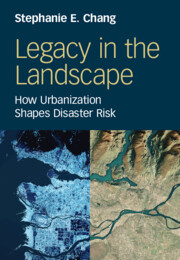References
Published online by Cambridge University Press: 11 November 2025
Information
- Type
- Chapter
- Information
- Legacy in the LandscapeHow Urbanization Shapes Disaster Risk, pp. 171 - 190Publisher: Cambridge University PressPrint publication year: 2025
